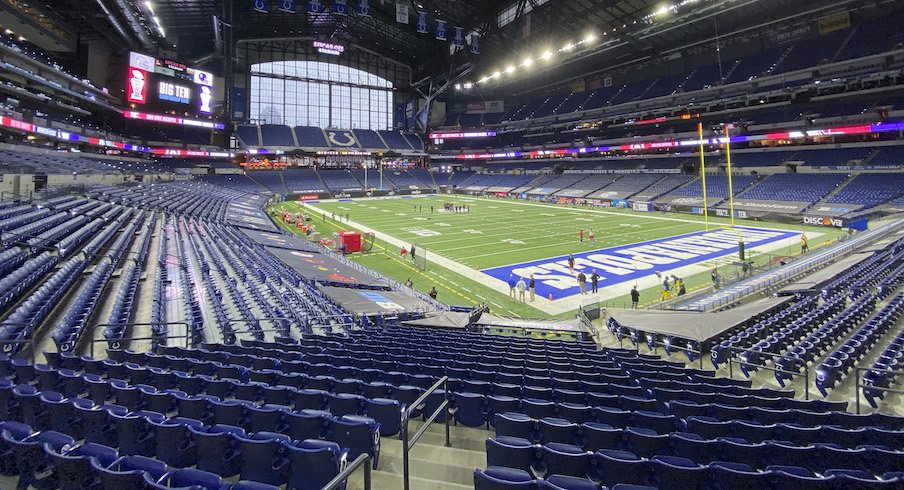For about a month last summer, it appeared as though the Big Ten’s 2020-21 football season would begin in the winter or spring rather than in the fall.
When the Big Ten announced it was postponing fall sports on Aug. 11, the conference initially stated it would look to contest those sports in the spring. Ultimately, the Big Ten reversed course and announced on Sept. 16 that it would play a fall football season beginning in late October.
Between those two dates, however, several other models were proposed for football seasons that could have started between November and January and ended as late as May.
Thanks to the emails that Ohio State released on Wednesday in response to public records requests regarding the Big Ten’s cancellation and reinstatement of the season, we now have a clearer picture of exactly what those proposals looked like.
An initial spring proposal
In the immediate aftermath of the Big Ten canceling the fall football season, the conference did not intend to play any football games until 2021. That said, the Big Ten also apparently expected all other conferences to follow its lead at the time.
A concept that was circulated on the same day the season was canceled proposed the possibility of keeping the Big Ten teams’ original 12-game schedules intact, including non-conference games, but giving Big Ten teams the option to play their home games in domes for the first four weeks of the season, which would have started on Jan. 29, before returning to their on-campus stadiums for the fifth week of the season on Feb. 27-28.
Ohio State, Indiana and Purdue would have played their early-season home games at Lucas Oil Stadium in Indianapolis. Minnesota, Wisconsin and Nebraska would have had U.S. Bank Stadium in Minneapolis as their early-season home venue, while Illinois, Iowa and Northwestern would have played in The Dome at America’s Center in St. Louis. Penn State would have had the option to play at either Ford Field in Detroit, where Michigan and Michigan State also would have played, or the Carrier Dome in Syracuse, where Maryland and Rutgers would have played.
The regular season would have culminated on the weekend of April 24-25, while the Big Ten Championship Game would have been played on May 1.
What that proposed schedule looked like:
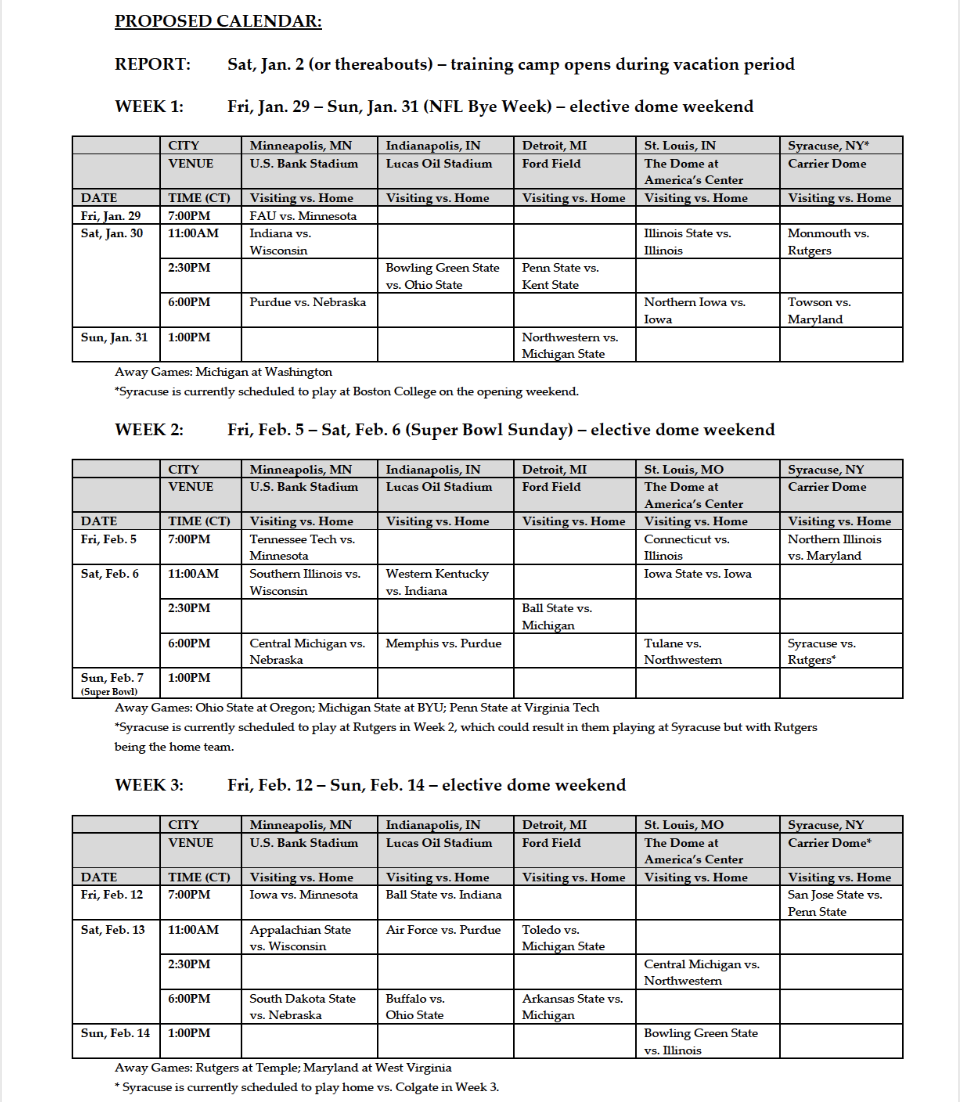
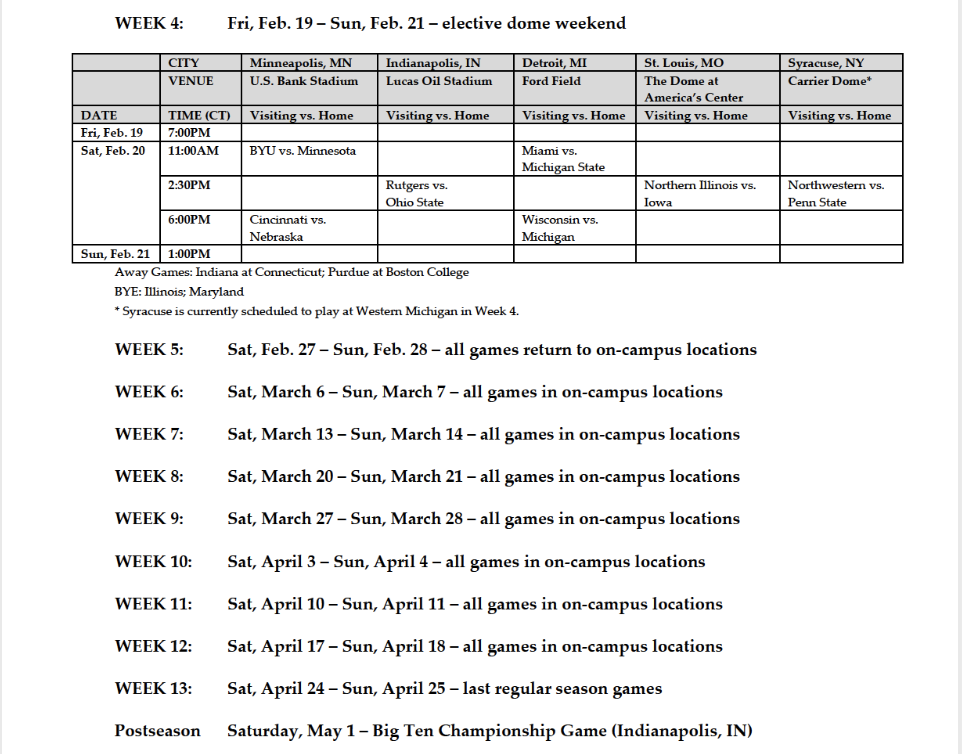
That proposal was sent by Illinois assistant athletic director of football operations Tim Knox to Ohio State general manager of football operations Brian Voltolini, who then forwarded the proposal to director of football operations Quinn Tempel, though it’s unclear who actually crafted the proposal.
Another spring proposal
An alternative model for a spring Big Ten football season was sent to the rest of the conference’s athletic directors on Aug. 19 by Rutgers’ Pat Hobbs, who proposed an eight-game season that would begin on Jan. 22-23 and culminate on March 27-28.
Hobbs considered potential conflicts with other sporting events, including the NCAA Tournament, which is why his proposal included a bye week between the seventh and eighth games of the regular season to avoid playing on the same weekend as the opening round of March Madness.
Like the other spring proposal, Hobbs’ was designed with the idea that other conferences would also play their seasons in the spring. Hobbs proposed for the Big Ten Championship Game to be played on April 3 with the College Football Playoff semifinals on April 10 and the national championship game on April 17.
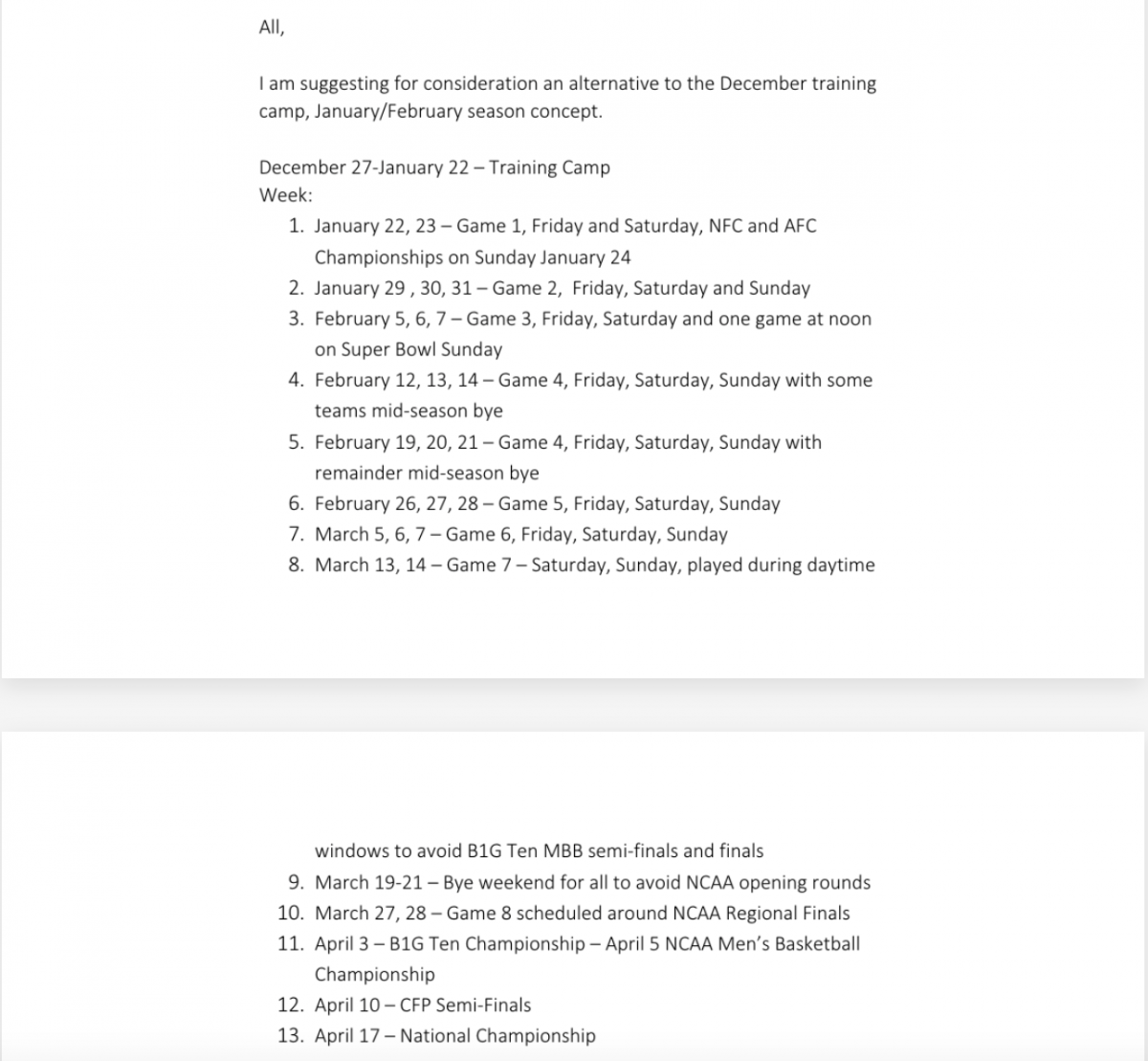
Ohio State athletic director Gene Smith, however, was not in favor of the proposal even though he respected the idea.
“Thanks Pat, appreciate the idea,” Smith wrote in an email reply. “Well thought out. Not something I could support and will share my concerns on our call.”
Thanksgiving/Late December models
As you might expect, Fox had a significant voice in the conversation surrounding potential football season models as the Big Ten’s primary television partner. After numerous season models were discussed by the conference, Fox informed Big Ten football coaches and athletic directors in an Aug. 28 email that it believed the two best options on the table were an 11-game season that would start on Thanksgiving weekend and a nine-game season that would start in late December.
In the late November start model, the season would have started on Nov. 27 (the day after Thanksgiving), with teams playing three games in four weeks to start the year before a Christmas week break. Big Ten teams would have then played seven games in nine weeks between Dec. 28 and Feb. 22, followed by a “Champions Week” with the Big Ten Championship Game being played between March 6-15.
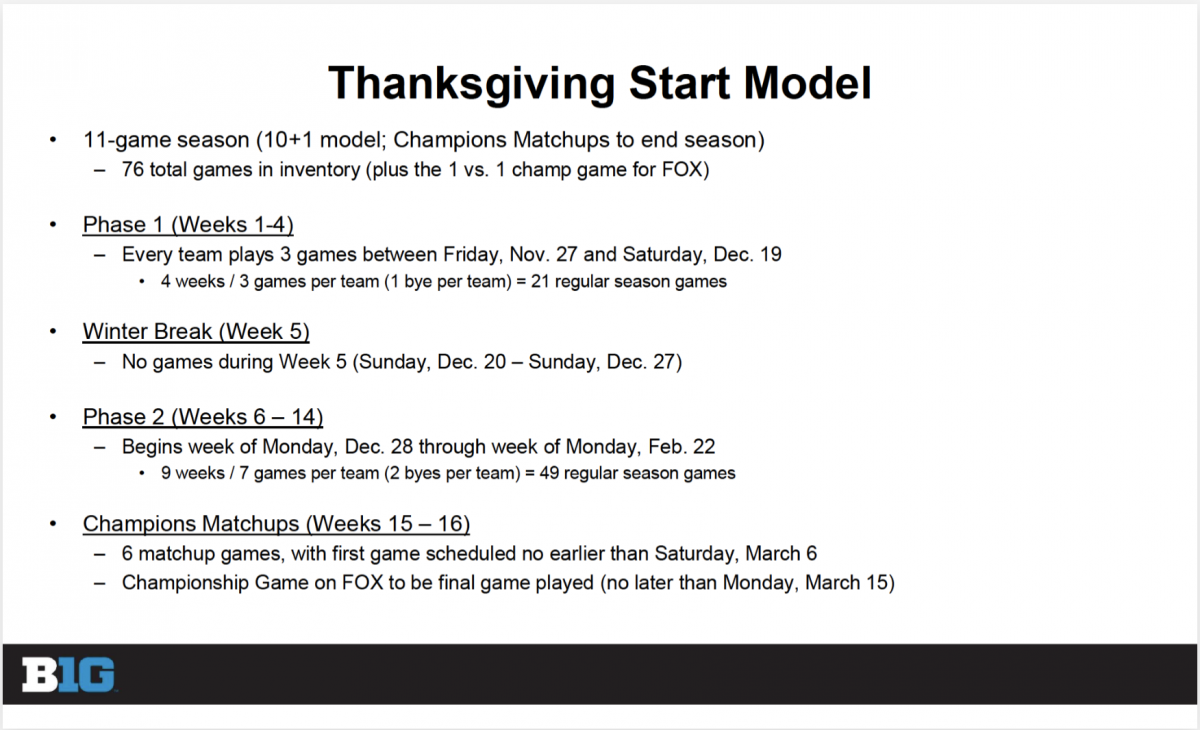
In the late December start model, teams would have played eight games in nine weeks between Dec. 28 and Feb. 22, beginning with a “Big Ten Kickoff Week” that would have featured seven games spread across five days (Tuesday-Saturday).
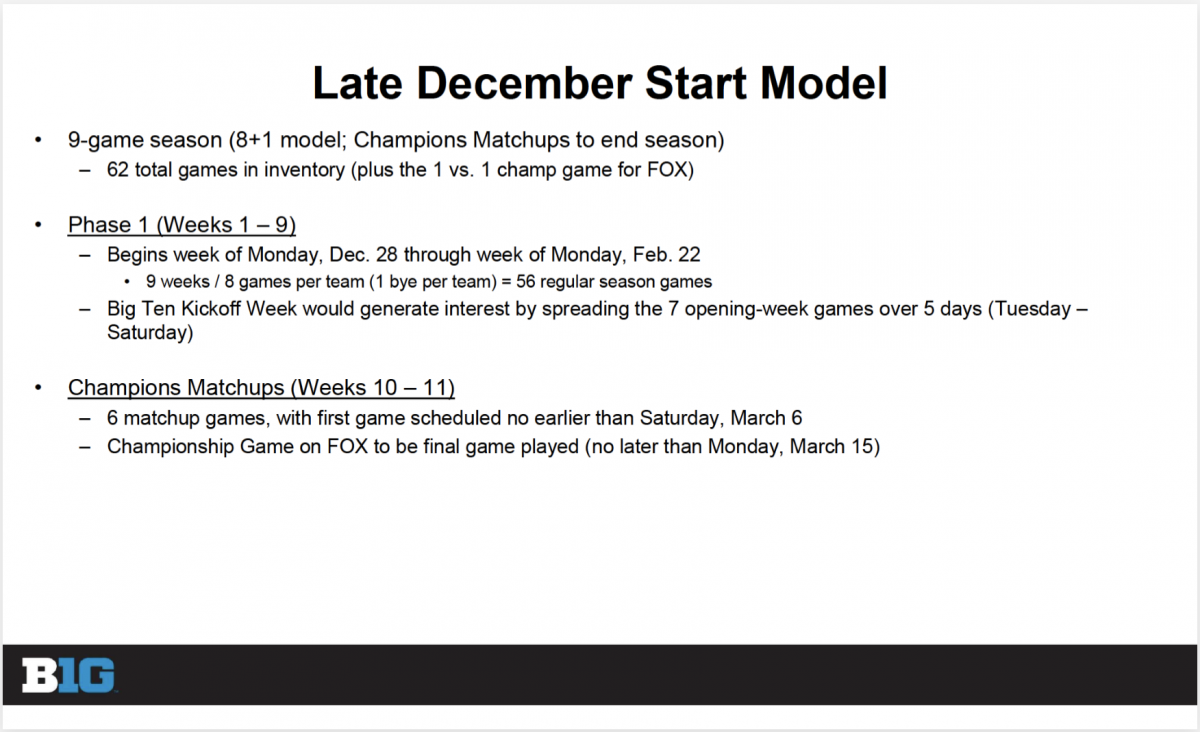
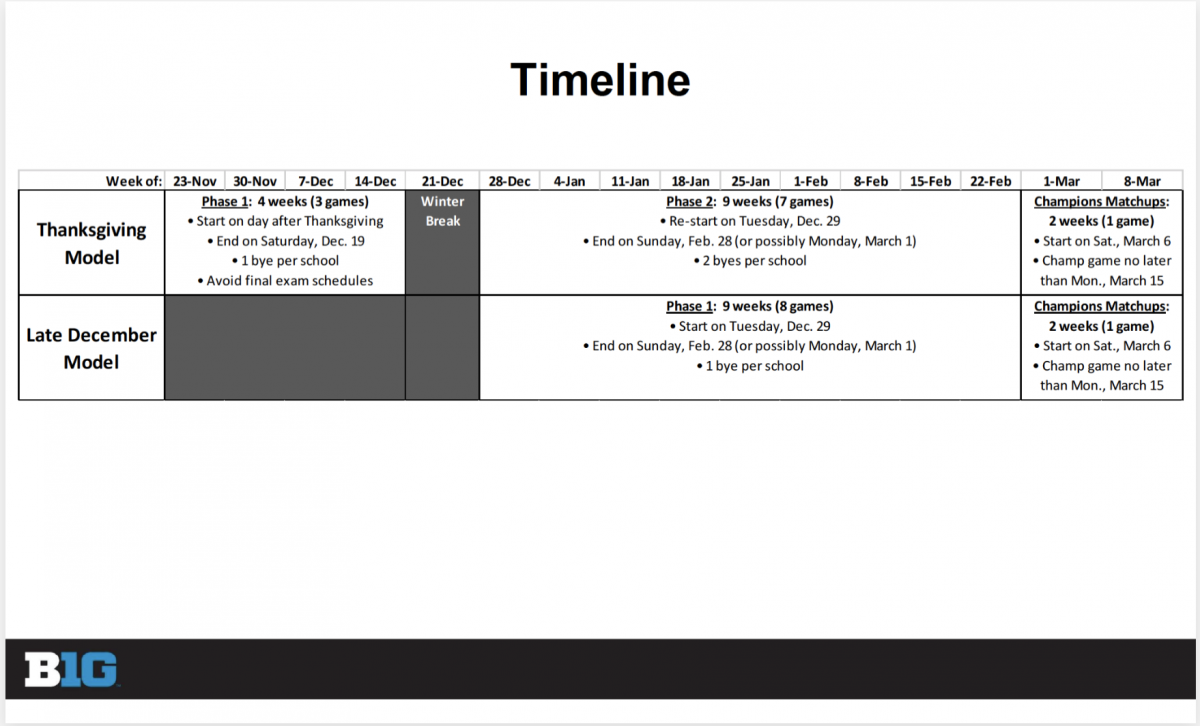
Getting back to October
Two weeks after that email from Fox, on Sept. 11, a new scheduling models document distributed to Big Ten athletic director by then-Northwestern athletic director Jim Phillips included the direction with which the conference would ultimately proceed: A nine-game season beginning in late October.
At the time, the hope was that the Big Ten would be able to begin its season on the weekend of Oct. 16-17, with each team having eight scheduled games and one bye in nine weeks, followed by every team playing during the conference championship game Saturday on Dec. 19. The model was proposed, though, with the idea that teams could still play eight games in eight weeks – though COVID-19 outbreaks throughout the conference ended up preventing most Big Ten teams from doing that – if the season on Oct. 23-24, which was the start date the Big Ten ultimately settled on.
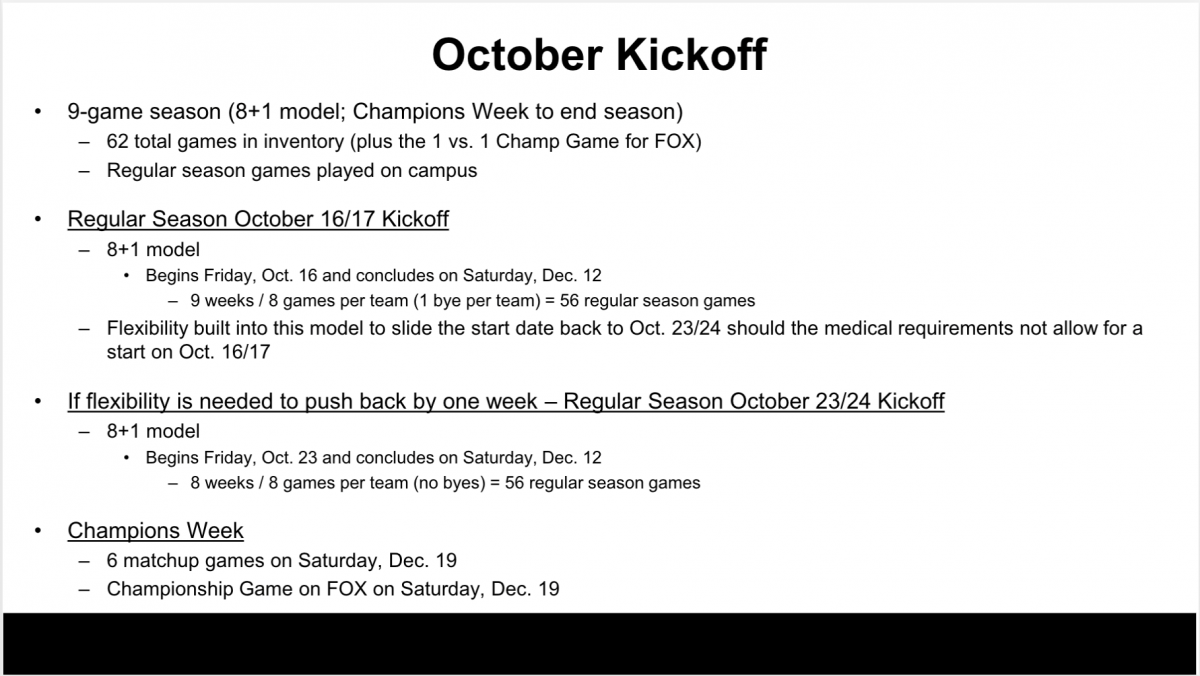
How a full fall season could have been salvaged
While the Big Ten ultimately ended up scrambling to start its season in October after it became clear that it would have to play in the fall for its teams to have a chance to make the College Football Playoff, the conference could have played far more games last fall if it would have stuck with the plan it announced just six days before it initially postponed the season, which was for Big Ten teams to play a 10-game conference-only schedule beginning on Sept. 3, which had three bye weeks built in for games to be made up.
Nearly two months before that, on June 18, Illinois athletic director Josh Whitman proposed a model that would have given the Big Ten even more flexibility. His proposal was for the Big Ten to play a 12-game conference-only schedule that would have begun on Aug. 29, which was set to be last year’s Week 0.
In Whitman’s proposal, teams would have played six games in six weeks from Aug. 29-Oct. 3 and six games in six weeks from Oct. 17-Nov. 21, with a bye week in between in which teams could make up games as needed, as well as three make-up weeks between the scheduled conclusion of the regular season and a Dec. 19 Big Ten Championship Game.
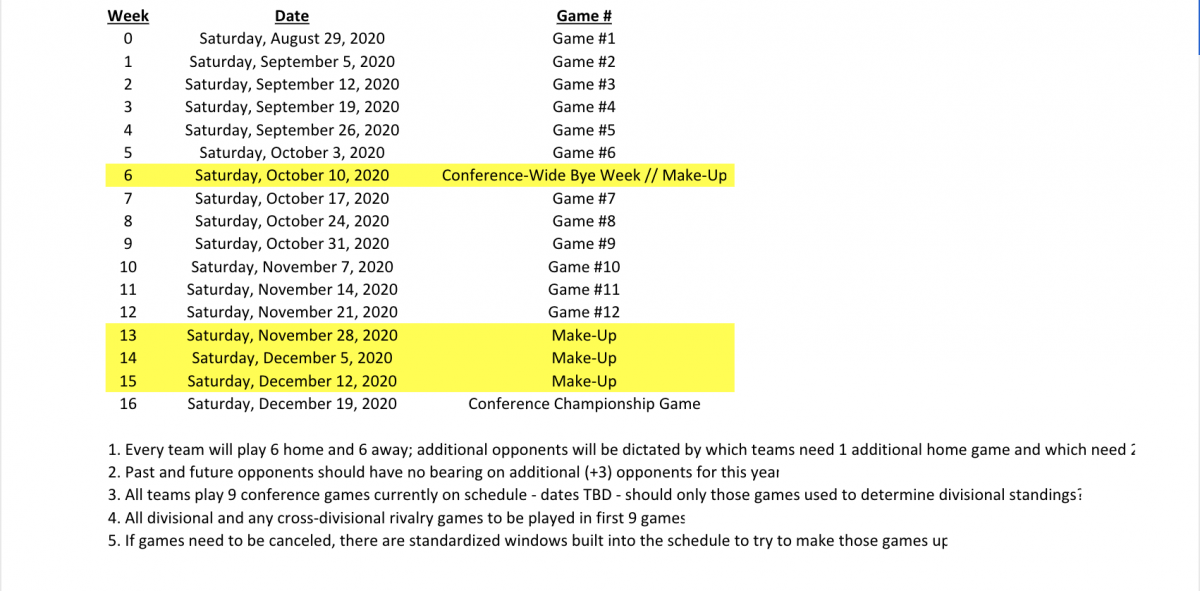
Whitman also suggested the possibility of moving rivalry games to the front end of the schedule, which could have ensured that games like Ohio State-Michigan actually happened in 2020 rather than being canceled.
“From a value perspective, imagine the audience Ohio State-Michigan would draw in a Week 0 opener, with all the pent-up thirst people have in the country right now for sports,” Whitman wrote in an email. “Literally, it could be the most watched regular season college football game in history.”
